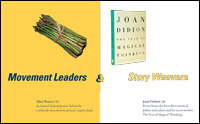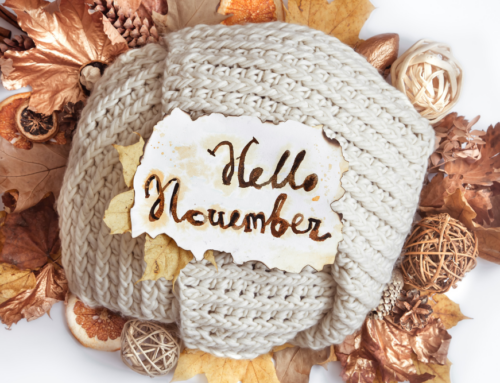The creative team has gone back to the drawing board. Gone are the cookie cutter imagery and the direct language about “you, a Cal alumni†being innovative, creative, etc. Instead, the team creates a piece that finally works: On the cover, it asks, “Who are you? Cal alumni are . . .†The “you†is in big, bright yellow letters, standing out against a black background. As you open the piece and unfold it, you see a series of panels:
Movement Leaders & Story Weavers
Creators & Innovators
Educators & Crusaders
Trendsetters & Friend Seekers
Activists & Satirists
Each tag includes a clear simple image with a small blurb about an alum who exemplifies that description. With Movement Leaders, you see a bunch of asparagus, and “Alice Waters, ’67. Acclaimed chef and pioneer behind the worldwide movement to eat local, organic foods.†
With Friend Seekers, you see a screenshot of Tom’s MySpace page with 201,904,463 friends. It says “Tom Anderson, ’98. Cofounder and president of MySpace.com and first friend to every user.â€Â
The ten images represent a great diversity in alumni in age, gender, ethnicity, and subject area. They are chefs, writers, teachers, scientists, programmers, inventers, cartoonists, and athletes who have all had a profound impact on today’s culture. Look at a PDF of the full piece It’s flat here, but you can imagine how it would unfold in your hands.
On the donation form and envelope, it closes with these simple phrases that say it all to the alumni-would-be-donors: “Cal alumni are changing the world. Won’t YOU champion the next generation of innovators?†followed by “Thanks for being who you are. We appreciate your generosity.â€Â
In creating the design, Amy Cranch, the piece’s principal editor, knew they had to choose between pictures of the alums or pictures of things that represented their contributions to society. “The thing is way stronger,†says Amy. “It makes a crisp design, and it’s much easier to relate to.†Most people wouldn’t recognize or know who Douglas Engelbart is, but everyone uses what he invented: the computer mouse. “We tried to be careful not to pick just famous people, but to emphasize the impact that these people have on our daily lives,†says Amy.
Douglas Engelbart is, but everyone uses what he invented: the computer mouse. “We tried to be careful not to pick just famous people, but to emphasize the impact that these people have on our daily lives,†says Amy.
“Instead of ‘You are this or that,’ it became an invitation to explore the categories of people, and to feel some excitement or pride that the thing you use everyday came from someone who went to the same school as you,†says Amy. The new approach still allowed Cal to play off the original concept of not being a cookie cutter and to still use “You†directly, but without jamming in onto people. “I firmly believe that using the personal stories opens the doors for further connections with people,†says Amy. People first, organizations second. Alumni first, Cal second.
Coming tomorrow: Find out why I think this piece works so well and about the test that Cal is running.






